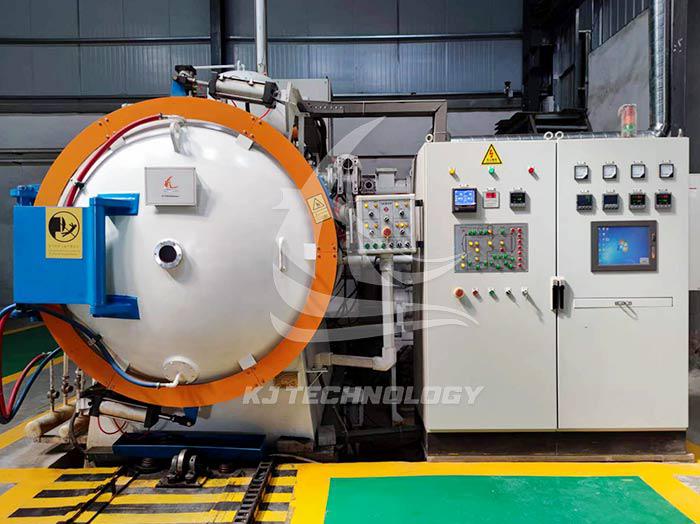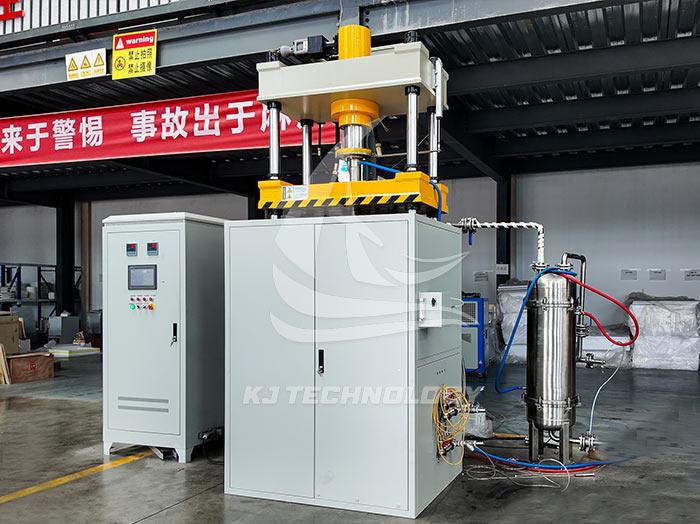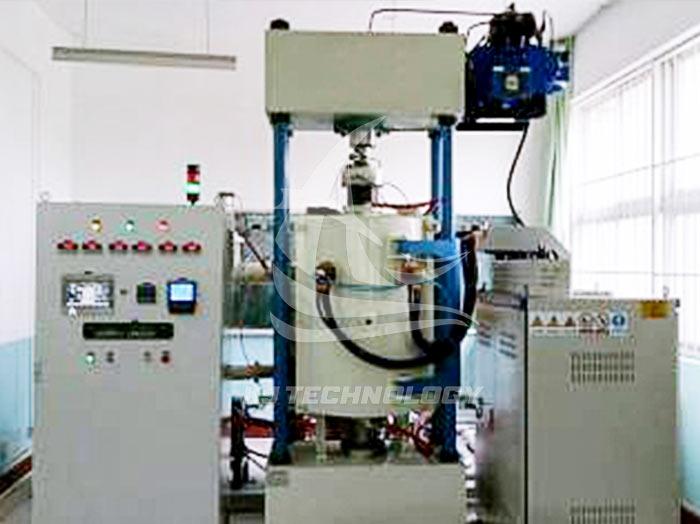Precautions for customizing vacuum annealing furnace
 06-18-2025 Author: KJ technology
06-18-2025 Author: KJ technology
When customizing a vacuum annealing furnace, it is necessary to consider multiple dimensions such as process adaptability, equipment performance, safety compliance, and long-term usage costs. The following is a detailed explanation of key precautions:
1. Clarify process requirements
Temperature parameters
Maximum temperature: determined based on material characteristics (such as titanium alloy annealing requiring ≥ 800 ℃, tungsten alloy requiring ≥ 1800 ℃).
Temperature uniformity: Precision parts need to be ≤ ± 3 ℃, while ordinary workpieces can be relaxed to ± 5 ℃.
Temperature control accuracy: within ± 1 ℃, a PID intelligent temperature control system is required.
Vacuum requirement
Extreme vacuum: Metal degassing requires ≤ 1 × 10 ⁻³ Pa, and semiconductor annealing requires ≤ 1 × 10 ⁻⁵ Pa.
Pressure rise rate: ≤ 0.5Pa/h, to be detected by helium mass spectrometer leak detector.
atmosphere control
Protective gases: nitrogen (N ₂), argon (Ar), hydrogen (H ₂), etc., require gas purification equipment (purity ≥ 99.999%).
Partial pressure control: Some processes require precise control of gas partial pressure (such as hydrogen partial pressure ≤ 10 ⁻ ² Pa).
Workpiece characteristics
Size and weight: The maximum size of the workpiece (such as Φ 500 × 1000mm) and the single processing capacity (such as 500kg) need to be provided.
Loading method: Choose pallet, basket, or continuous conveyor mechanism.
2. Core component selection
Heating system
Heating element: High temperature alloys (such as molybdenum wire and graphite) are suitable for temperatures above 1200 ℃, while nickel chromium alloys are suitable for temperatures below 800 ℃.
Power configuration: Calculated based on the heat capacity of the workpiece (e.g. 20-30 kW per cubic meter of furnace).
vacuum system
Pump combination: rotary vane pump for rough vacuum (pumping speed ≥ 200L/s), molecular pump for high vacuum (pumping speed ≥ 1000L/s).
Valve configuration: High vacuum baffle valve, plug valve, and vent valve are required.
Insulation and heat preservation
Thermal insulation screen: multi-layer molybdenum or stainless steel reflective screen, with a minimum of 5 layers.
Thermal insulation material: made of alumina fiber felt or carbon felt, with a density of ≥ 128kg/m ³.
3. Safety and Compliance
safety protection
Overtemperature protection: Level 3 alarm (temperature exceeding limit → cutting off heating → starting cooling).
Pressure safety: Equipped with bursting discs and safety valves, with a bursting pressure of ≤ 0.15MPa.
Electrical safety: grounding resistance ≤ 4 Ω, insulation resistance ≥ 1M Ω.
Environmental Protection and Certification
Exhaust gas treatment: Hydrogen annealing requires the installation of catalytic combustion devices, with nitrogen oxide emissions ≤ 50mg/m ³.
4. Customized functions
Automated control
Program setting: Supports multi-stage heating, insulation, and cooling curves (such as step annealing process).
Data recording: Real time recording of temperature, vacuum degree, gas flow rate, with a storage period of ≥ 1 year.
Special process support
Magnetic field annealing: optional electromagnetic coil (magnetic field strength 0-1T).
Rapid cooling: equipped with air or water cooling system, cooling rate ≥ 10 ℃/min.
5. Supplier evaluation
Technical capabilities
Do you have similar project experience (such as aerospace, semiconductor industry cases).
Whether to provide thermal treatment process simulation services (such as ANSYS simulation verification).
after-sale service
The warranty period is ≥ 1 year, and the warranty period for key components (such as vacuum pumps and heating elements) is ≥ 3 years.
Response time ≤ 24 hours, spare parts supply cycle ≤ 7 days.
Cost and Delivery
The total cost includes equipment fees, installation and commissioning fees, training fees, and spare parts fees.
Delivery cycle: Standard equipment takes 4-8 weeks, customized equipment takes 12-20 weeks.
6. Risk control
Technical risk
Avoid excessive customization that may result in cost overruns (such as unnecessary high vacuum requirements).
Reserve upgrade interfaces (such as adding atmosphere analysis functionality in the future).
contract terms
Clear acceptance criteria (such as temperature uniformity testing methods).
Agreed liability for breach of contract (such as compensation ratio for delayed delivery).
Summarize
Customized vacuum annealing furnaces require a comprehensive evaluation based on process requirements, combined with core component selection, safety compliance, customized functions, and supplier capabilities. Suggest adopting the three-step method of "requirement solution verification":
Clarify process parameters and form technical agreements;
Request the supplier to provide a proposal and simulation verification;
Prove key performance indicators through pilot testing.
Systematic processes can effectively reduce customization risks and ensure that equipment meets long-term production needs.








